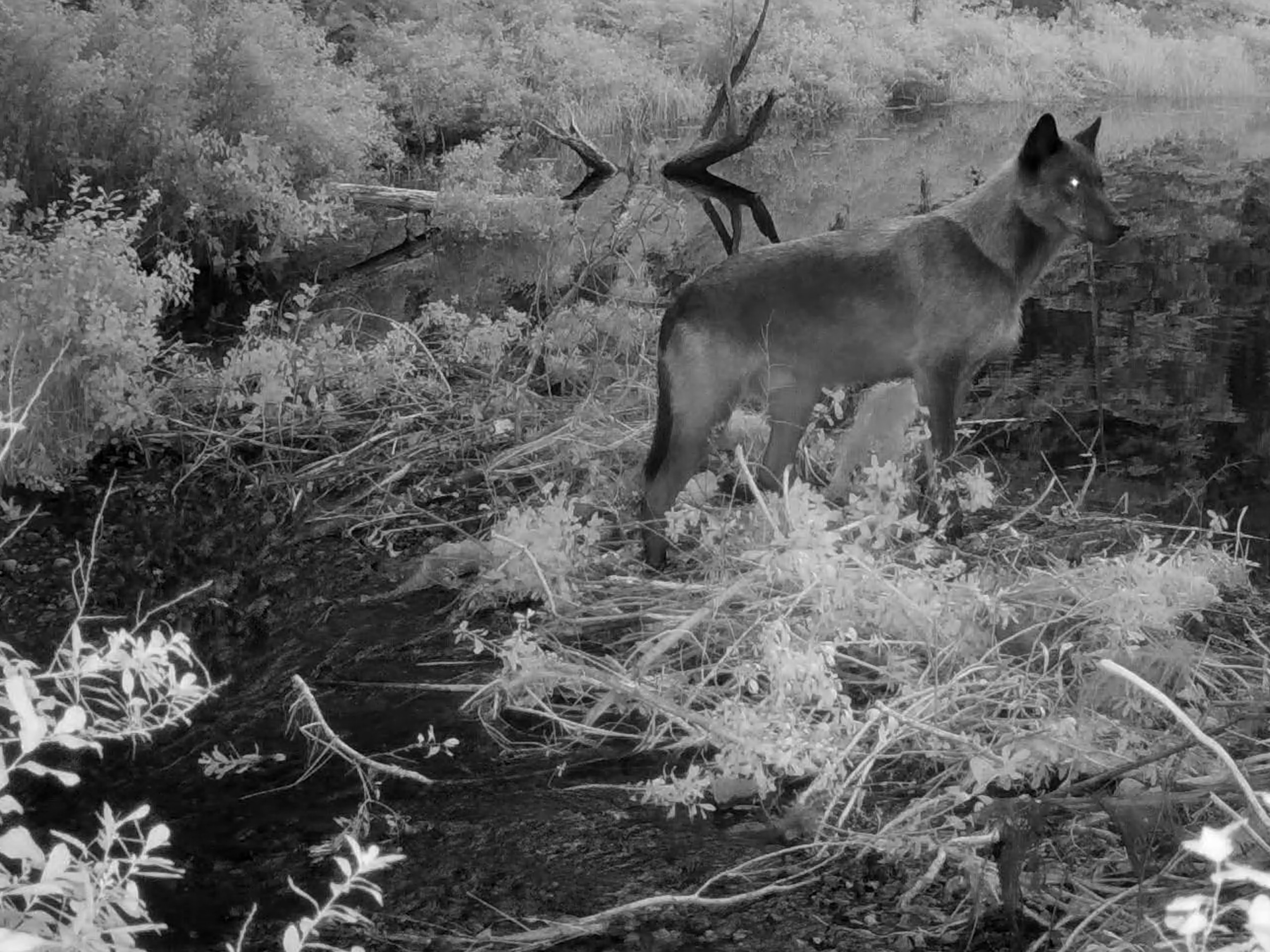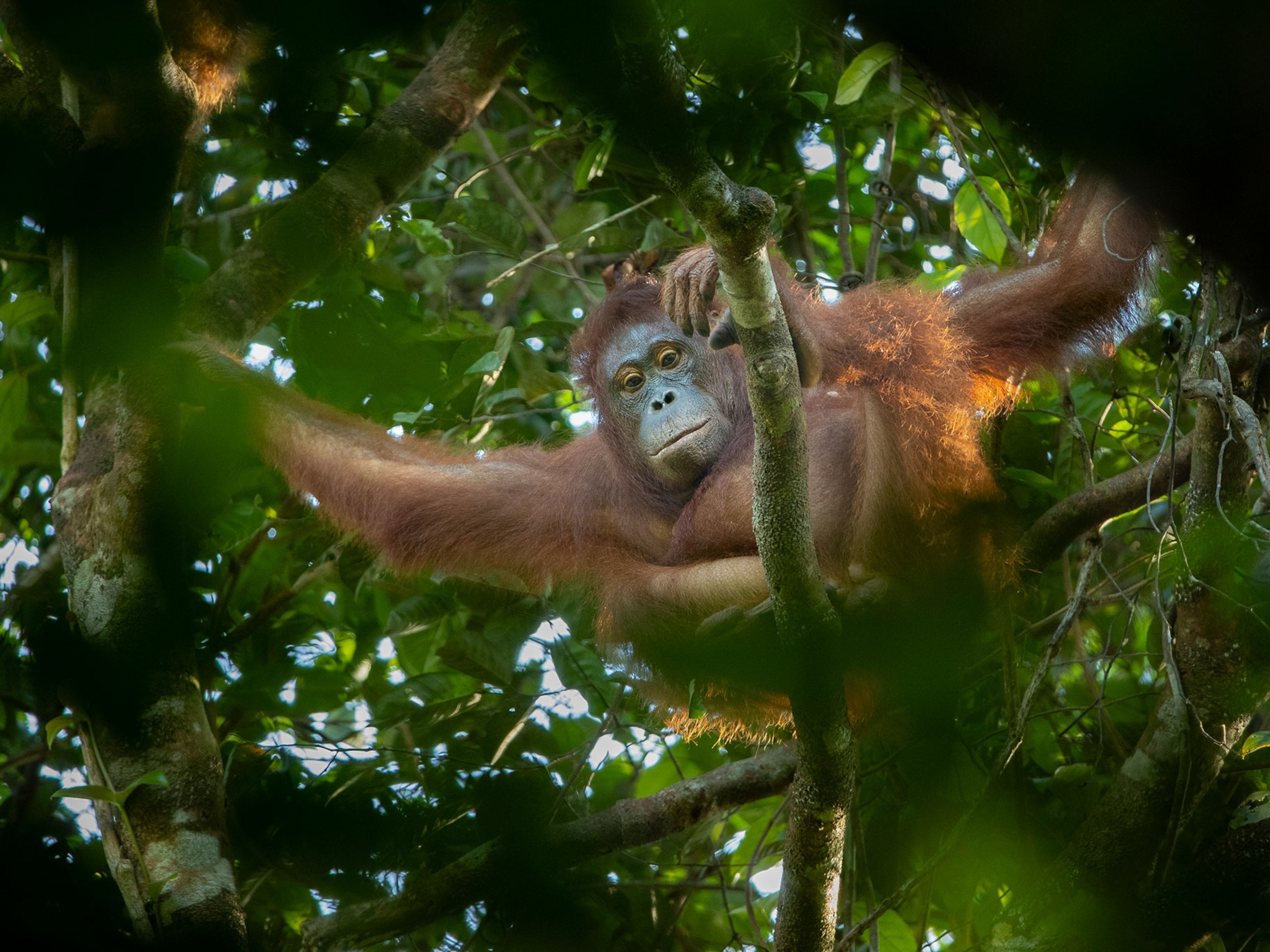A pair of wild western lowland gorillas in Africa have surprised researchers by engaging in face-to-face mating, the Wildlife Conservation Society announced today.
Though the behavior had been observed before in mountain gorillas, it had never before been seen in the lowland gorilla subspecies—and had never before been photographed in the wild.
Perhaps just as surprising, the female in the photographs—Leah, named after Star Wars's Princess Leia—is also the first gorilla seen using a tool in the wild.
Conservation biologist Thomas Breuer took the mating photographs in 2005, but the images are only now being released to the public.
Breuer, of Germany's Max Planck Institute and the New York-based Wildlife Conservation Society, never expected to observe such a sight.
"Seeing the similarity between humans and gorillas in this respect is fascinating," he said.
Previously Seen in Zoos
Breuer is conducting a long-term study of gorilla social organization and sexual selection at Mbeli Bai in Nouabalé-Ndoki National Park in Congo.
Most primates mate facing the same direction.
"Bonobos [mate face-to-face] routinely—zoo gorillas and zoo chimps too," said Craig Stanford, an expert in great ape behaviors with the Jane Goodall Research Center at the University of Southern California (USC).
But the behavior—first noted in a spring 2007 edition of the Dewar Wildlife Trust's Gorilla Gazette, a newsletter for gorilla scientists—had never before been documented among wild western gorillas.
Harem Society
Breuer's photos might appear to show a couple sharing a special bond as Leah's daughter Nancy, about four years old at the time, looks on. But gorillas mate in a harem society.
Leah is just one of four females currently in the harem of her partner.
Her mating partner in the photos, George, is named for a famous president—Washington, not Bush.
And despite her lowly status, Leah appears to be a rather special gorilla.
In 2005 she made news as the first gorilla ever seen to use tools in the wild when she was observed using a walking stick to cross a swampy forest clearing.
Such tool use was considered surprising for wild gorillas, which some believe are less intelligent than other species of tool-wielding great apes.
"That is why this story is so cool," Max Planck's Breuer said. "The fact that it's the same female makes it extremely interesting."
Progressive Gorilla?
USC's Stanford isn't sure that the unusual copulation sheds much light on gorilla behavior.
"Unless it's seen widely, it doesn't really mean much," he said.
So is Leah a particularly progressive gorilla? Perhaps. But Max Planck's Breuer also suggests that her behavior might be rare or simply rarely seen.
"What we know about these gorillas is just a tiny bit," he said.
"So I'm kind of hesitant to say she's particularly special. I think we're [beginning] to understand the flexibility of their society and natural behavior. In time we may see more."
Diane Doran-Sheehy is anthropology chair at Stony Brook University in New York and a grantee of the National Geograpkhic Society's Committee for Research and Exploration. (The Society owns National Geographic News.)
She has observed more than 500 gorilla matings in the wild—and none were face-to-face.
"It is an interesting observation and raises questions about why they sometimes engage in it," she said.
There may be practical considerations given the apes' marshy habitat, for example.
"Perhaps a female doesn't want to be face down in the swamp," Doran-Sheehy said.
Critical Time
Western lowland gorillas are listed as critically endangered by the World Conservation Union. Their populations have declined as much as 60 percent in recent years because of illegal hunting, habitat loss, and fatal Ebola fever.
Leah and George's encounter made their plight even more poignant for Breuer.
"It leads me to think about how similar gorillas can be to humans, [and yet] we humans are destroying them," he said.
"I'm thinking about their conservation, because we're not going to see these things in the future if we continue to threaten [these animals]."




